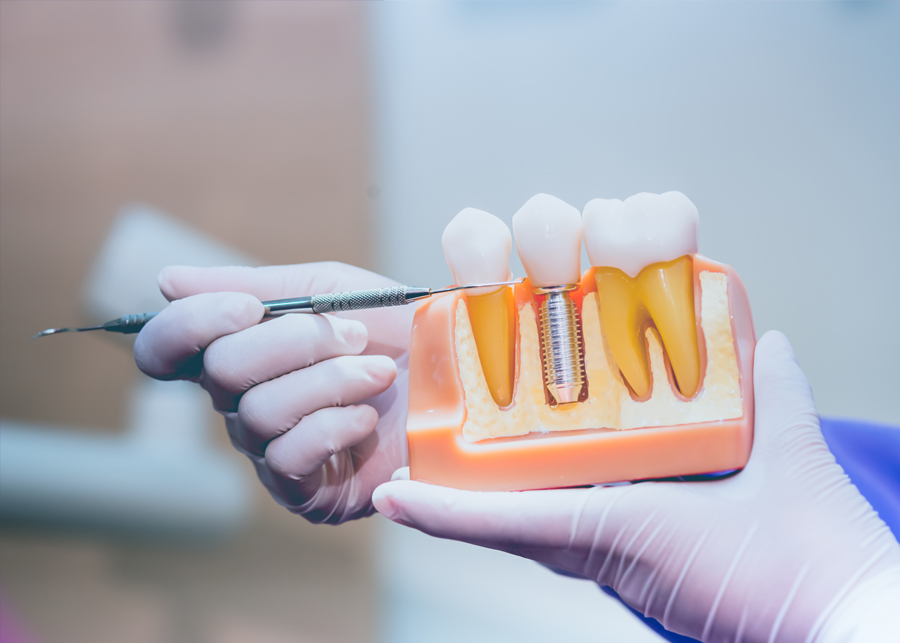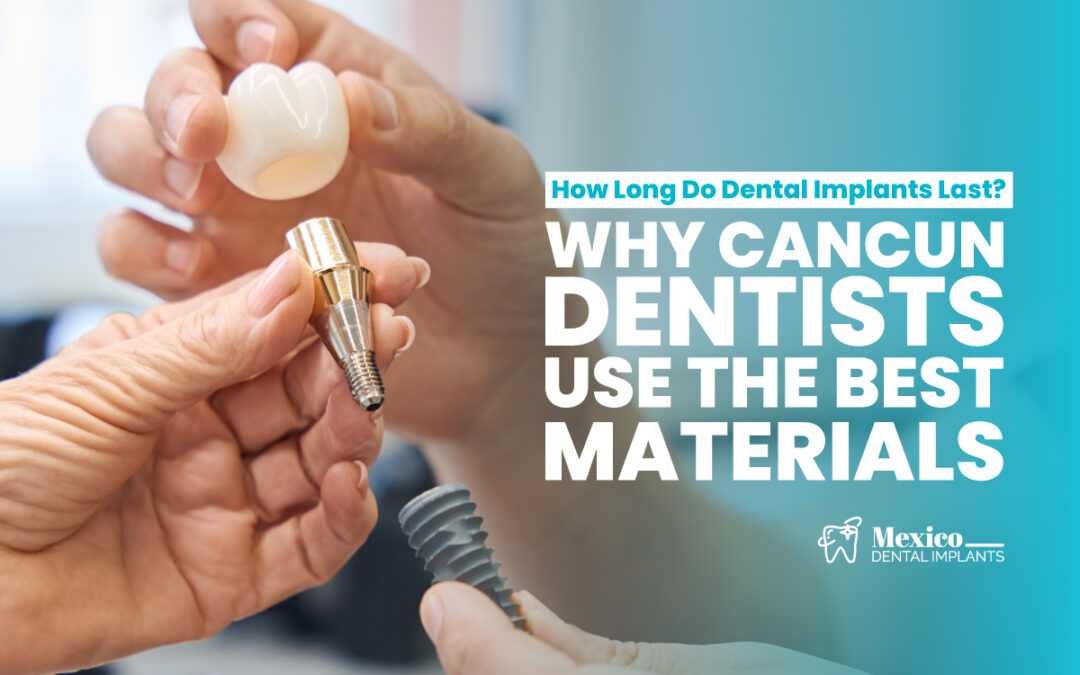July 20, 2023
Exploring the Different Types of Dental Implants
Dentistry has progressed greatly, so improving your smile can be achieved in many ways. If you suffer from tooth loss, dental implants are the most popular and recommended procedure because they not only improve your smile’s appearance but also your oral health, which leads to better overall well-being.
Dental implants are the most natural, aesthetic, and durable treatment for tooth replacement. However, the choices can be overwhelming.
Let’s take a thorough look at the different types of dental implants available to make your choice a bit easier.
What Are Dental Implants?
Dental implants are tiny posts that attach to the jaw, and most of them are made from pure titanium. Due to their small size, they fit into the bone under the gum, acting as the root of a tooth.
These implants merge with dental crowns to form customized replacement teeth using a connector or abutment. They offer a versatile solution for all types of tooth loss, adaptable to individual requirements.
Now that you have a clearer understanding of their nature, let’s explore the various options available for you to choose from.
Types of Dental Implants
Firstly, we need to talk about the different ways that implants can be inserted. These include endosteal, subperiosteal, and zygomatic implants.
The safest and most prevalent type is Endosteal, followed by Subperiosteal, with Zygomatic being the final and most intricate option, albeit rarely employed.
Endosteal Implants
These are the most common types of dental implants. Although they are suited for most individuals, the patient needs a good, healthy jawbone for the post to fuse to. They are placed directly into the jawbone and are shaped like small screws.
After the procedure, it requires time to heal and fuse together to create a stronghold. Once it’s healed, the false teeth can be placed on the post to fit in with the surrounding teeth.
Subperiosteal Implants
Different from endosteal implants, which are fixed into the jawbone, subperiosteal implants are placed on top of the jawbone.
This is the main alternative for endosteal implants. Patients who don’t have enough healthy jawbones to support the endosteal ones will typically go for this option.
A metal framework positioned atop the jawbone secures the implant in its position, while the implant’s posts extend through the gums.
Zygomatic Implants
This procedure should only be done if the patient doesn’t have enough jawbone for the Endosteal implant. To learn more about this type of implant, read our blog, ‘’What is a Zygomatic Implant and Who Needs Them?’’
All-on-4 Implants
All-on-4 is a dental implant technique in which just four implants replace the upper or lower set of teeth. These four implants act as a support mechanism for the placement of a new set of fixed teeth. With this procedure, an entire row of teeth can be replaced in a very short period of time. Learn more about All-on-4 dental implants here.
Snap-on Dentures
Snap-On dentures consist of 2–6 implants placed in the patient’s mouth and a denture that simply snaps on the implants. These are a more secure type of implant that clips in place, but the patient will need to remove and clean them after bedtime like they would with a traditional denture. Learn more about the differences between snap-on dentures and all-on-4 implants here.
Single Tooth Implants
A standalone implant, known as a single-tooth implant, is used to replace a single missing tooth.
The implant is inserted into the jawbone, and a replacement tooth or crown is subsequently affixed to the implant post.
Single-tooth implants provide a durable and aesthetically pleasing remedy for tooth loss while also aiding in the preservation of the neighboring teeth and jawbone structure.
They serve as an excellent choice for patients with one or two missing teeth who desire a stable, permanent, and authentic-looking solution.
Implant Bridges
An implant bridge is a dental implant option that’s used to replace multiple teeth that are missing. It relies on the support of two or more dental implants, which are carefully positioned in the jawbone.
By connecting the bridge to these implant posts, a secure foundation is established to support the replacement teeth.
Implant bridges provide a durable and realistic solution for tooth loss while also aiding in the maintenance of the surrounding teeth and jawbone structure.
They are an excellent choice for individuals with consecutive missing teeth, as long as they still have healthy teeth on both sides of the empty space.
Immediate Load Implants (Teeth In a Day)
Immediate load implants, commonly referred to as “teeth in a day” implants, are a specific implant category that enables patients to receive replacement teeth immediately following implant surgery.
These implants are typically recommended for individuals with sufficient healthy jawbone structure to support the implant and who seek a convenient and time-efficient treatment alternative.
Additional Techniques for Dental Implants
There are some cases in which the patient may require an additional procedure in order to continue with dental implant treatment. For instance, if the patient’s jaw cannot support implants and they can’t go for a Zygomatic implant, there are other alternatives:

Bone Grafting
Bone grafting is a surgical intervention employed to reconstruct or rejuvenate a jawbone that has been lost as a result of injury, disease, or tooth extraction. This procedure is frequently required for individuals seeking dental implants but lacking sufficient healthy jawbone structure to support them.
Sinus Lift
A sinus lift consists of adding bone to the upper jaw in the area below the sinus.
When there’s not enough bone in that area, this procedure can be a possible solution.
It entails making a small incision in the gum tissue and adding a small quantity of bone to the site. The purpose of this procedure is to prepare the area for the subsequent placement of a dental implant.
Ridge Expansion
In some instances, the width of your jaw may not be adequate for implants. In such situations, your dentist can perform a grafting procedure, where additional material is inserted into a space created along the upper portion of your jaw.
There are several different types of dental implants out there for you to choose from.
If you are considering dental implants as a solution for missing teeth, contact Mexico Dental Implants to discuss which option is best for you.



